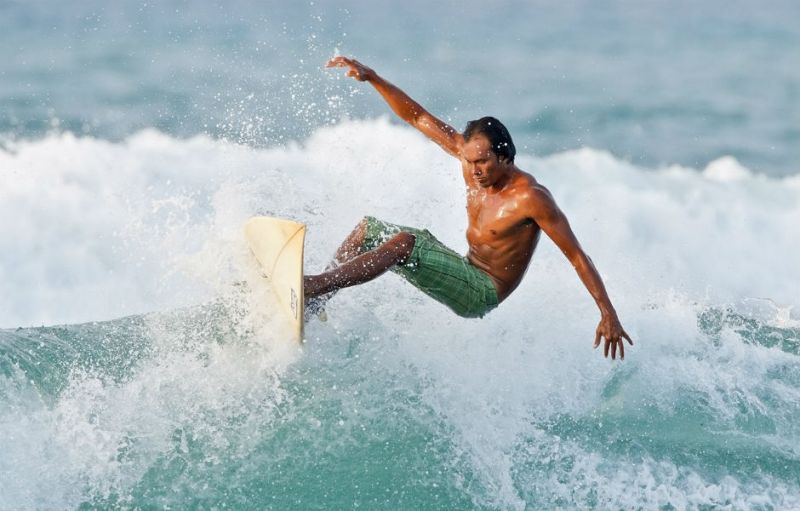
GETTING THERE
Bus: Taking the bus can be confusing, since there aren’t really any clear schedules on the internet, but the best advice we can give you is to go to one of Manila’s main terminals and ask them where the bus to San Juan, La Union is. Busses usually leave every hour. You can also try checking PinoyTravel for departure times. Once you’re on the bus, ask the conductor to drop you off in San Juan, La Union if your accommodations are on the highway.
Car: You can hire a driver for approximately $200 or rent a car, and take on the new expressway, which will get you there in four hours.
STAY
Monaliza Surf Resort
This affordable and charming family-run hotel has 11 rooms right on the beach with all the basics. It was also the first surf resort to be set up on the coast in San Juan when the founder noticed the influx of American air force men coming from nearby Wallace Air Station to catch some waves back in the early ‘80s, so there’s a lot of history there.
Urbiztondo
San Juan, La Union
+63 072 888 4892
Kahuna Hotel
This boutique hotel features 31 rooms with Filipino and Balinese-inspired decor with garden or ocean views. Take up their surf clinic, get a bite at their café, or take a dip in the infinity pool.
Manila North Road
San Juan, La Union
+63 72 607 1040
LEARN TO SURF
Depending on where you stay, you can have the hotel hire a surf instructor, which averages to about $10 for surfboard rental and an hour-long lesson.
San Juan Surf School
This San Juan Surf School, which was established by Australian-Filipino surfer Luke Ladrigan, hails itself as the #1 surf school in the Philippines.
Urbiztondo
San Juan, La Union
+63 916 744 2229
EAT
Halo Halo de Iloko
This eatery serves up delicious, authentic Filipino food, along with the best halo halo, the dessert it was named after, in the area. It also offers Palabokano, a noodle dish with a local touch.
12 Zandueta Street
San Fernando City, La Union
+63 72 700 2030
Gefseis Greek Grill
Two Greek guys helm the kitchen here, so aside from the lack of native Greek ingredients in the area, you know it will be as authentic as you can get for the Philippines. It’s pretty decent if you’re in the mood for cuisine that isn’t Filipino.
Urbiztodo 2514
San Juan, La Union
+63 92 160 49989


